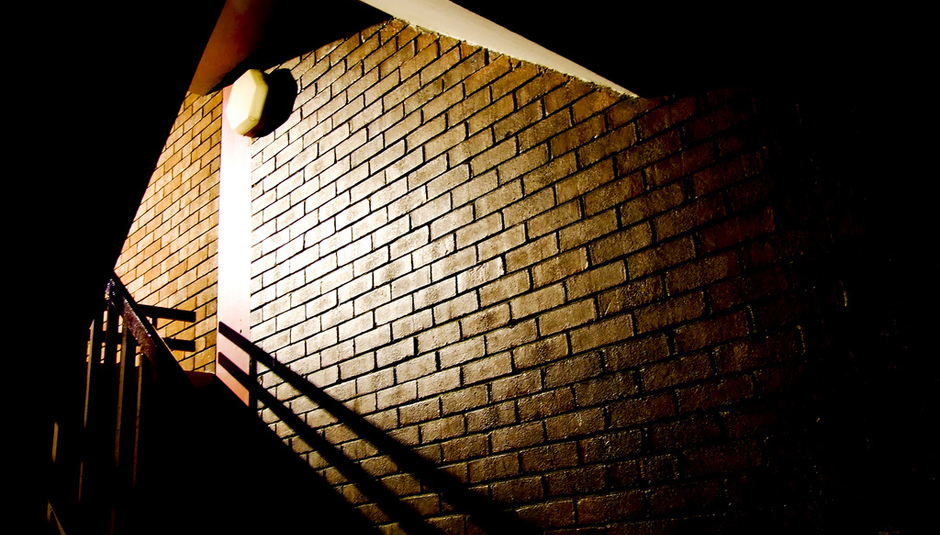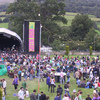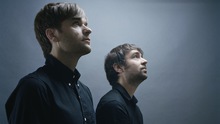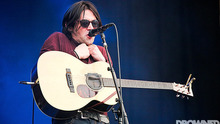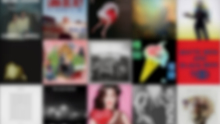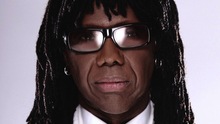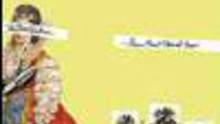For anyone keeping even a casual eye on the ongoing development of London’s post-garage music styles over the last few years, Martin Clark’s name ought to set bells ringing. His involvement with the scene surrounding Rinse FM and London’s bass culture runs deep: as a documenting eye/ear, both his blog and Pitchfork column ‘The Month In Grime/Dubstep’ follow shifts on both micro and macro levels, drawing attention to tiny trends and developments; some escalate into full-scale movements, others recede and are lost in the ever-advancing crowd.
As Blackdown, alongside production partner Dusk he has made another name recording subtle, slow-burning tracks that reflect on London’s cultural and psychological role in the sounds that echo through the city’s streets. Their rightly acclaimed Margins Music album was a dense and humid experience, brimming with found sound and the multicultural thrum of their urban surroundings. Even now it calls to mind the glow of early Burial’s crackling disintegration loops, were they to speak of active engagement instead of detached anxiety and alienation. Somewhere between those roles – keen observer and involved participant – both his record label Keysound and his and Dusk’s monthly Rinse FM show offer opportunities to merge the two, recording and showcasing the new sounds emerging from London and beyond. For anyone interested in following the scene’s ongoing developments, it’s an excellent place to start – check their archive here for downloadable shows.
Keysound Recordings itself is an intriguing prospect, shapeshifting between technicolour grime from the likes of Zomby and Starkey to the pure Big Smoke-isms of Dusk & Blackdown's own material, Burial and DVA, via slo-mo garage from Bristol’s Kowton and into its latest signings, LHF. One of the most intriguing musical collectives to have emerged for quite some time, LHF record and present their music to the world in a way that’s entirely apart from the swift information overload of the internet age. It emerges in tiny snippets, mixes, radio shows, lacking tracklists or producer details, and in doing so ties their music to the joyous anonymity of pirate radio. As with their sound – effects laden, dripping with film samples and otherworldly modal melodies – their methods seem less concerned with finding some sort of impossible utopia within the constraints of society than with the creation and sustenance of an entirely separate cultural autonomy.
LHF's music touches on deep psychedelia, but remains entirely connected to a tangible reality – I’ve struggled to come up with a better description than Clark’s own: ‘Like Sun Ra’s hijacked Rinse FM and is using it to communicate with the heavens’. They’ve recently released their first EP via the label, and are soon to release an EP follow-up and album; in the meantime, the Keepers Of The Light Facebook group gathers their mixes together – they're well worthy of investigation and careful absorption.
I caught up with Blackdown via email to discuss the draw of pirate radio, London’s spirit in urban music, the Margins Music live show and the ongoing evolution of dubstep, garage and grime.

DiS: What was it that originally drew you to London’s pirate sounds?
Martin: Well, long before I knew about pirate stations it was the music itself, as it radiated out from the capital. In my case it was albums like Goldie’s Timeless and jungle as a whole that got me hooked. Then came my first taste of garage, which was for me Sunship’s mix of ‘Friendly Pressure’ and Wookie’s remix of Gabrielle, after which I was hooked. But it also left me asking, ‘how can this new form of music come about, when jungle was running things?’ That question led me to the pirates.
What first interested you in documenting the shifts within the scene through blogging/your Pitchfork column and your Rinse show?
I’ve always been keen to get to the root of things, to cut the wheat from the chaff, to find the best stuff and cut out all the rest. It’s a natural urge I guess, if you know what a great track feels like, why listen to an average one? Discovering jungle was great, labels like Metalheadz and Creative Source were my personal first points of contact, but naturally to begin with it still felt distant, like there were layers of the underground deep below. But when I went to Metalheadz at Blue Note and saw DJs like Doc Scott, Grooverider, Peshay and Bukem drawing out dubplates, I finally felt that I’d reached the bottom, that all the layers had been peeled back to reveal the true source.
Moments like these left me hooked on urban/dance music and I began to write about it. I’d loved scenes like 90s NY hip hop or Detroit techno, but as I started working as a journalist I felt in garage there was something that both fulfilled all the musical styles and flavours I like but was also something I could engage with as a writer.
In those times, which were the early ‘00s, I began contributing to music magazines like The Face, Jockey Slut, Mixmag and even Hyperdub.net when it was a web fanzine but noticed this massive disparity between the quality of music coming out of the London pirates and the coverage in music magazines. Blogging, my Pitchfork column and my Rinse show (I’m glad you included that here…) are all extensions of the opportunity this disparity presented me. Detroit techno, NY hip hop and acid house all had these grand narratives that were peddled month in and month out – how the Bellville Three formed techno, how the keep it real movement was pushing hip hop, how a group of friends went to Ibiza, discovered acid house and brought it back to London – but where was the great writing about UK garage or proto grime? Dark strains of garage were forming and kids were using their own street slang to form their own narratives right on the London media’s doorstep, and pretty much no-one cared. So I began to write about it: garage began to collapse and people said ‘get out while you can’, but something in me thought I should stay. With garage on a downward trajectory, it turns out the rate of change would be greatest once you passed the bottom of the curve, and I soon found myself at the birthplace of two rapidly evolving new scenes, dubstep & grime.
The other point to be made about documenting eras is how transient they are. I was listening to an old Rinse recording from about 2004 the other day and was suddenly struck by a sense of both familiarity and sadness. It made me realise that while there’s an unbroken stream of dubs and new music, things move quickly on. The seamlessness of the continuum hides the passing and before you’ve realised, in fact without you realising, those dubs are gone. Entire styles can disappear, producers of massive talent and importance can fade… lost in the noise of scenes and the relentless forward momentum. That mix brought such strong sense of nostalgia it reminded me the importance of documenting scenes. Because eventually someone will ask ‘how did we get here?’ and maybe we won’t be able to say.
As someone who has been involved with the dubstep and grime scenes since the very beginning, has it been a surprise to see the level of comparatively mainstream attention dubstep has started to attract over the last year or two? Are there any particular factors you think were involved in its sudden escalation?
Well in dubstep’s case yes, it has been pretty shocking. In the science of climate change people talk about the ‘hockey stick’ shaped graph and that’s what dubstep did: pottered along for six years with incredible quality of music but very ignored by everyone. It went through a ‘tipping point’ in 2006, through the weight of amazing music from Digital Mystikz, Loefah and Skream, through DMZ and Dubstep Warz and exploded. I’m just about getting used to it but it’s hard to overstate how surreal it feels sometimes, remembering six years where no one would listen for love nor money, now Magnetic Man can smash festivals, Snoop Dogg namechecks it and Plastician can play to 35,000 people.
Grime too is pretty mainstream now, its major players – Dizzee, Wiley, Chipmunk, Tinchy Stryder and Skepta - have achieved far more commercial success than even dubstep and to use recession parlance, it’s had a kind of ‘double dip’ growth: the hype around it circa 2003/4 with Dizzee’s Mercury win, then the subsequent downgrading of its hipster status, then a fightback to prove its commercial viability in 2009/10.
It’s a mixed blessing though. With a few exceptions - Burial’s albums or Dizzee’s Boy In Da Corner - both dubstep and grime have had to make creative compromises that really diminish their value for me. Grime’s diluted the aggression that made it so sonically uncompromising and a wake-up call for the conditions in multicultural urban London. Dubstep’s narrowed its range to a series of moronic lowest common denominators, becoming idiotic and infantile. It’s tragic because the optimist in me says it shouldn’t or didn’t have to be like this, that given the right momentum sonically uncompromising music could touch people on a massive scale. Yet on the whole for these two cases, it didn’t: it had to be dumbed down to expand, which is why I guess I don’t spend much time paying attention to the mainstream variants of either anymore.
How important has Rinse FM been in the development and growth of this community?
The pirate radio community as a whole should be seen as a massive asset to British culture, and while so many others – Freak for garage, Kool for jungle, Déjà Vu for grime, Raw Mission for proto-grime and countless others - Rinse is the jewel in the crown. It’s like the Barcelona FC of grime stations.
I’ve done several in depth, unpublished interviews with the Rinse management and it’s clear that they’ve had several very crucial influences. Firstly they pioneered the prominence of MCs in jungle, a move that would set them up for grime nicely – a genre that places the MC at the front of the MC-DJ-producer triangle. Indeed, as garage got darker they were there to form grime, given that they were run by several members of one of grime’s foundational crews, Pay As U Go.
While everyone ‘on road’ was fixated on grime, Rinse spotted dubstep and saw its potential. Before it there were a few dubstep DJs on a few stations scattered across the dial: Hatcha and NType were on Upfront I think, SLT Mob had a show. But when Rinse decided to support dubstep it was a massive boost for the scene, arguably the lifeline that alongside Forward>> kept it alive. Suddenly you had Kode9, Hatcha, Scientist, SLT Mob, Mark One, Plastician, Skream, Benga etc all in one place and it sent out a real signal.
Rinse was also quick to clock the UK funky movement and adjust their schedule accordingly, and have since moved to back the UK house sound of Circle. People like to have a pop at Rinse these days because they’re successful, but within urban music circles in the last decade their influence in unparalleled.
Do you think Rinse finally gaining an FM license is indicative of a wider shift in attitudes towards the kind of music they have always pushed to give greater exposure?
I’d love to think it was, but I’d be hesitant to proclaim a brand new dawn in British broadcasting on the basis of one data point. The FM dial remains controlled by the authorities and rammed with mediocrity, especially in the commercial sector. The old models of ‘lowest common denominator for widest possible audience’ seem difficult to break down, especially in a recession.
Essentially most commercial radio is still following old broadcasting models: choosing the blandest content to appeal to one, broad audience. The internet, online radio and on-demand broadcasting should change that, but it remains to be seen how much. Especially extreme is the States, who have very little opportunities for specialist radio broadcasting. If these new forces are to make a change, it’ll be pretty visible there.
As a Londoner, I find your thoughts on London’s role in the development of garage, dubstep, grime, funky etc particularly interesting, and you’ve described Keysound in the past as a label that looks to London as a psychological/geographical factor in these sounds. Do you think it’s possible to isolate any particular things about the city that contribute to the development of so many different, but intrinsically linked, music styles? And by extension, other artforms that tap into a similar headspace – Nico Hogg’s photography, for example?
It’s an interesting question: what makes London a music powerhouse rather than other European capitals? I’d point to a number of factors while qualifying my statements that they mostly apply to black/urban/dance music.
Multiculturalism has got to be a massive factor: London has people with heritage from all over the planet and in relative terms (compared to say Paris) there is a lot of integration (rather than segregation) and this makes for interesting musical mutations. Of obvious importance is the working class black community, especially those with Jamaican heritage, because the culture of music making and of creative ownership over that music is so rich.
London has a long culture of pirate radio broadcasting, a community which overlaps massively with the black community, and so shares the sense of ownership and DIY culture that generates exciting underground music.
There are common themes that run through the different styles, such as the taste for dark flavours, and you can draw connections between the decay of old buildings, of the gloomy rainy weather, of discontent due to inequality and poverty or even the manifestation as ‘dark’ as a signifier of power, an expression of ownership - but equally the common themes are just as much attributable to the culture of ownership. Tempos and genre names may change but the ownership of the creation of much of the music styles I follow remains owned by the same groups. So it stands to reason that there are links and shared themes.
This is what Dusk and I are trying to do right now. If you have one scene, then that is your place. But we check for dubstep, grime, UK funky, 2step/garage and some of the house sounds around and I see them as basically defining a volume in which we can operate, zig-zag between, bending the edges and boundaries, finding new twists. Kode9 seems to call this ‘getting lost,’ which I like.
As dubstep has gone global, and fragmented into so many different micro-niches, do you think it’s still possible to trace something of London’s spirit within tunes made by people who may have never visited the place? In other words, do you think that there’s something about London that travels with the music, regardless of where it’s made?
Yeah… ish. There are some people abroad who really, really get it, such as Dave Q, Sekkle, Joe Nice and the Dub War gang with dubstep in NYC. But then equally we played to 800 ravers in LA and they really, really didn’t get it, especially the subbier dubstep, so it would be hard to say they’d imbibed the spirit of 3rd Base. And to be fair how would they, since they’re being fed stadium rock-style wobble by DJs? But I like to think that, just as a teenager I dreamt about Wu Tang on Staten Island or Carl Craig rolling through Detroit, that when people hear something on Keysound they feel like they’re lost somewhere deep in the margins of London around twilight. Or, with LHF, somewhere between the pirate ether and the celestial heavens.
How did the Margins Music tour originally come together, and how did you find the process of putting a live show together?
When the guys who helped Magnetic Man find their feet were first discovering dubstep, they came to me and I gave them Skream’s manager, Soulja. Two years later they came back to us about our album. We were very sceptical about the process to begin with, but in the end we found a way to make it work.
Obviously performing electronic music live can be a bit of a minefield, in the sense of trying to avoid looking like you’re pressing play on a laptop and little else – how did you work on getting around that?
We were all too aware of the pitfalls, I’ve hated other people doing it. The first assumption we made was to not forget who we were or what we were about. We also knew our enemy: on one hand it’s the electronic fraudsters who just step up and press ‘play’ on the CD/PC. On the other there’s the live mediocrity: the example I always quote is seeing Destiny’s Child with a fat rock drummer instead of Rodney Jerkins. I spoke to people like Kode9, Skream and Benga about how they’d done things and took advice onboard.
So musically we set about working with about 5 musicians to faithfully recreate our album so it would roll like a DJ set, have bassweight like it was at DMZ but also be able to be organic and evolve. We also considered the visual angle: our VJ Jonathan Howells, who directed our music video, made 22 new videos, tempo and mood synched for each track.
How did you feel the tour went, did you manage to achieve what you set out to?
Well, we’re only just over half way through, with a date in Reading on the 10th of September and Subloaded in Bristol on the 10th of November. I think it’s up to other people to judge it but I was happy with it. It’s one of the hardest things we’ve ever done: we put in 50 hours alone learning and preparing on Ableton. Rehearsals were exhausting but ultimately amazing. Farrah and Japjit on vocals became real front women, Bobbie’s a badgyal synth player and Renu, well everyone talks about Renu’s drumming. Performing live with Trim was an utter privilege, especially when he came over in the middle of ‘Bullet A Go Fly’ remix and said ‘yo, just chop it all up for me…’
More so even than other labels that release similar music – Hyperdub, for example – to an outside listener Keysound seems to be bound by a very strong aesthetic, both musical and visual. How did it first come about, and has it developed as a label and a sound in the way you’d anticipated?
It came about like most labels, out of necessity, since people didn’t want to release our music. But a strong aesthetic? Well that is the dark art isn’t it? To have a label aesthetic without being bound or confined. So as I mentioned above, my plan is to have a series of touchpoints and to zig zag between them and find the backwaters, the weird mutations, the records so powerful that you’d kill for ‘em. The visual element is part of it all, so it all feels like one.
And no I’m not sure it’s developed like I anticipated, because to begin with it was just supposed to be an outlet for our music when no one wanted it, but now it’s grown to become something broader.
LHF are one of the most interesting groups of musicians I’ve listened to in quite some time, not only for their music itself but also in the way they present it to the world. How did you first come across them, and what drew you to them? Do you have a rough ETA for the release of the next EP and album?
Now I’ve met LHF, I feel like I’ve always known them. In fact, our paths were already closer than we realised and had been for many years, we only just opened our eyes now. The next step for me is to help other people have their eyes opened to LHF too. EP1 [Enter In Silence] is out now, EP2 will drop in about two months. The album will be done when it’s done.
LV’s 38 EP felt like a bit of a shift for the label in the sense that it was the first thing you released that had a very defined narrative - rather than being a set of tracks on a 12”, it was more of a coherent piece. Have you got any plans to release any similar things in future?
I’m someone who doesn’t see a lot of barriers between records you listen to and dance to, I guess because I’ve lived through Wiley’s devil mixes and Kode9’s ‘Sine of the Dub’, and can also find the most boshing yet stiff trance utterly undanceable. So yeah, I’d happily release more material like the 38 EP.
Do you have many plans for the label in the near, and not so near, future?
As a label owner I’m really, really hungry just now. In the near future we will be releasing EPs/12”s from LHF, Vibezin, Balistiq Beats ft Riko, Badness, Shizzle, Killa P and Jamakabi, Zed Bias & Steve Gurley. There’s loads more in the wings, all a bit undefined right now. At some point we’re going to have to put out another Dusk + Blackdown 12” to remind people we’re not dead… To be honest we have quite a lot of new material, but people need to come to our gigs and it’ll do the talking.
Are there any new producers or sounds that are particularly exciting you at the moment?
Tracks that rule my world right now are…
Trim ‘Confidence Boost (Harmonimix)’
Rishi Romero ‘African Forrest’
Girl Unit “Wut’
Double Helix ‘Chamber of Light’
Amen Ra ‘Candy Rain’
LV “Boomslang’
MC Creed ‘Generate’ (Esko production)
Vibezin ‘Hot 4 U’
Dusk + Blackdown ‘Dasaflex’
Balistiq Beats ft Jamakabi ‘Yardman’
Ghetts ‘Intro’
Though check our Rinse FM show & older show archive for more like this…
Addendum: This interview leads naturally into discussion and thought around what state the ‘scene’ – if it’s so easy to narrow down to a single entity – finds itself in now. With the benefit of hindsight we can effortlessly pick out the defining trends that led from one entity to another - hardcore to jungle, jungle to garage, garage to grime and dubstep – while ignoring, or perhaps forgetting, that between those tightly defined styles and prolonged episodes of stasis there were periods of rapid change and divergence. It’s something Clark has blogged extensively about in recent years, and seemed an appropriate point at which to finish this interview.
I'm interested in where you feel the narrative arc passing out of grime and dubstep is at now? Obviously they seem to have fed into so many things - the whole 'future garage' thing, Night Slugs-y house, funky - do you think it's as easy to define a narrative stretching forward from here as it was to follow the arc, say from garage into dubstep (if that was an easy arc to follow)? Your Rinse shows are so varied now, do you think that's a reflection on a fairly fragmented scene?
I guess over time I've begun to see things in cycles, which I tried to document in this blog post. When a scene is large and well established, it often has very high sense of definition (it knows what it is and what it thinks it’s not) and low rate of mutation or change. Where we are right now in or after dubstep, if you ignore wobble (which is large and not changing a lot), is a series of offshoots, mutations with low amount of definition (i.e. they seem diverse) but lots of creative potential. Loefah's dark 808 shit, juke mixing with dubstep, the Night Slugs (and their love for grime) and Standard Place camps, people making 2step beats again, future garage (not that I like that term, but I like the general sentiments...), UK funky and lots of house influences sparked by UK funky and a nostalgia for old UK garage, dubbage and the Circle camp (not that they're remotely anything to do with dubstep). Even the more downtempo, LA stuff has really interesting connections. Can't forget grime, instrumental or MC-lead.
The term 'fragmented' sounds pejorative, but I see it as a moment with great potential, because there are so many options right now, especially around 130 bpm, but really anywhere between 125 and 140, if you're into the above styles and camps. This is what Dusk and I are doing, as Rinse DJs, label owners and as producers, is rebuilding, trying to explore the space between and beyond all these touch points. You could call it exploring, though Kode9 calls it 'getting lost’, from this interview.
“Well I'm not blown away by much to be honest, although I crave that fix, and that's what drives me to discover music that I haven't heard before, new and old. Most people that make music or DJ have experienced at least one musical movement that embodied an energy that was singular and that inevitably things get measured against, even if you don't listen to that music anymore or make it. Until, that kind of singularity comes that reshapes everything, it all just seems like a fun, but an ultimately transitory mess to get lost in. The point is to create something fresh in the process of getting lost.” - Kode9
More of Martin’s writing and his Rinse show archive can be found at his blog, Blackdown.
Header photo by Nico Hogg

